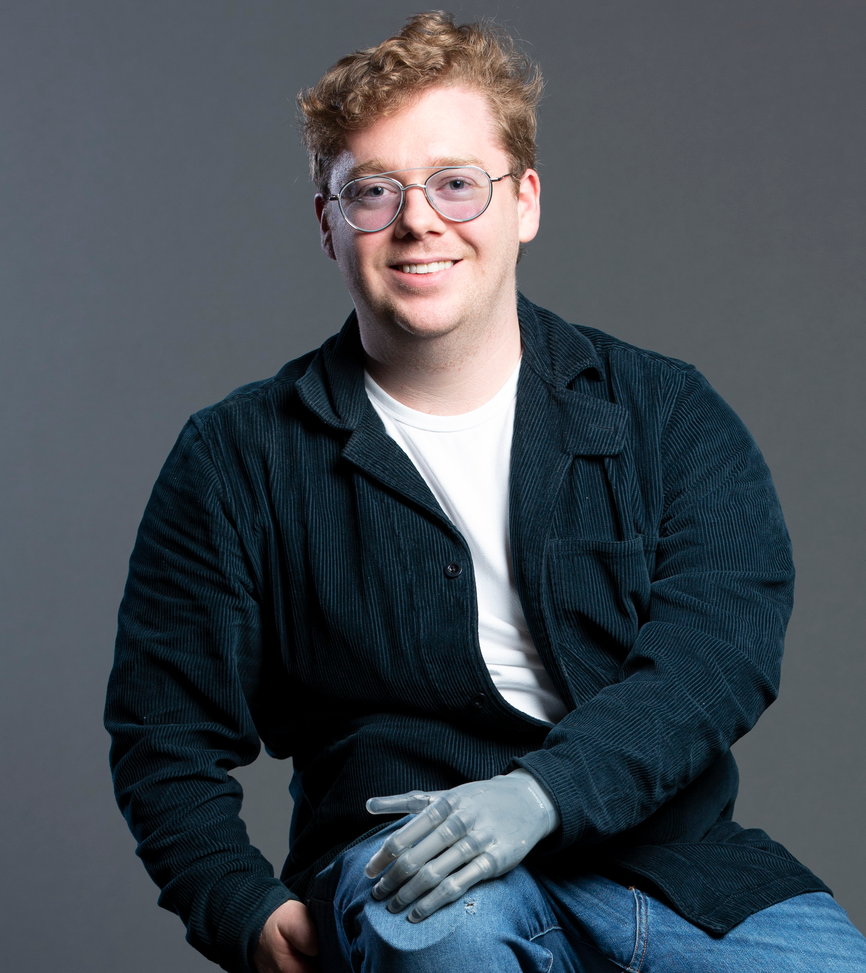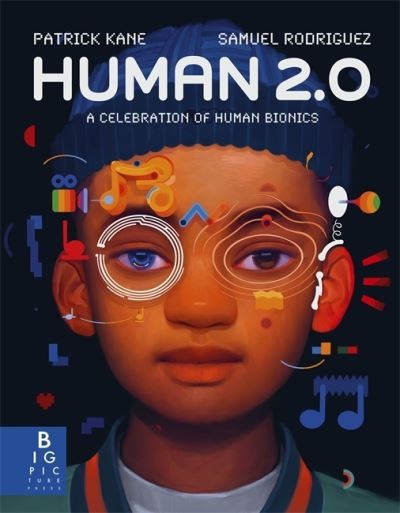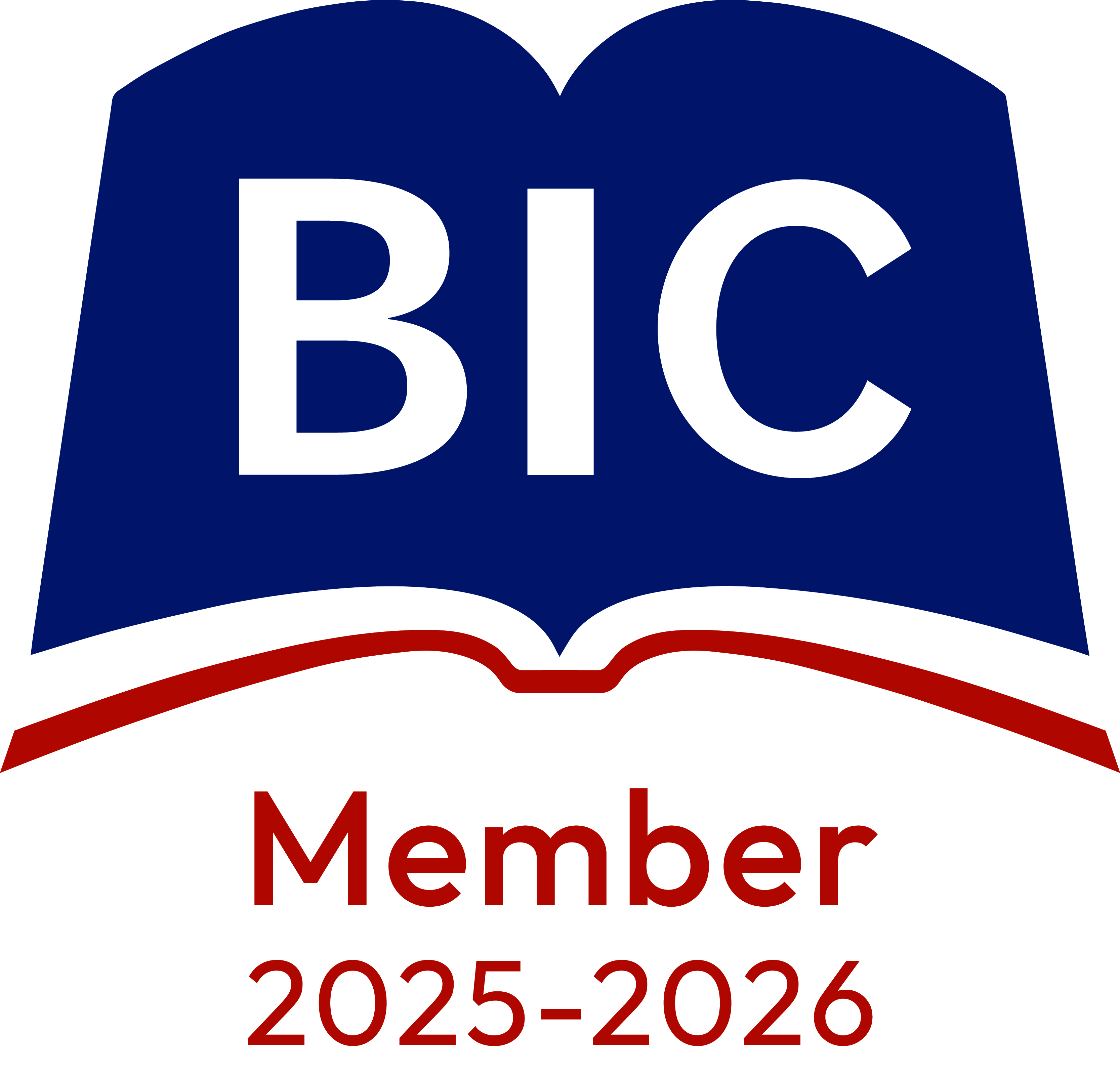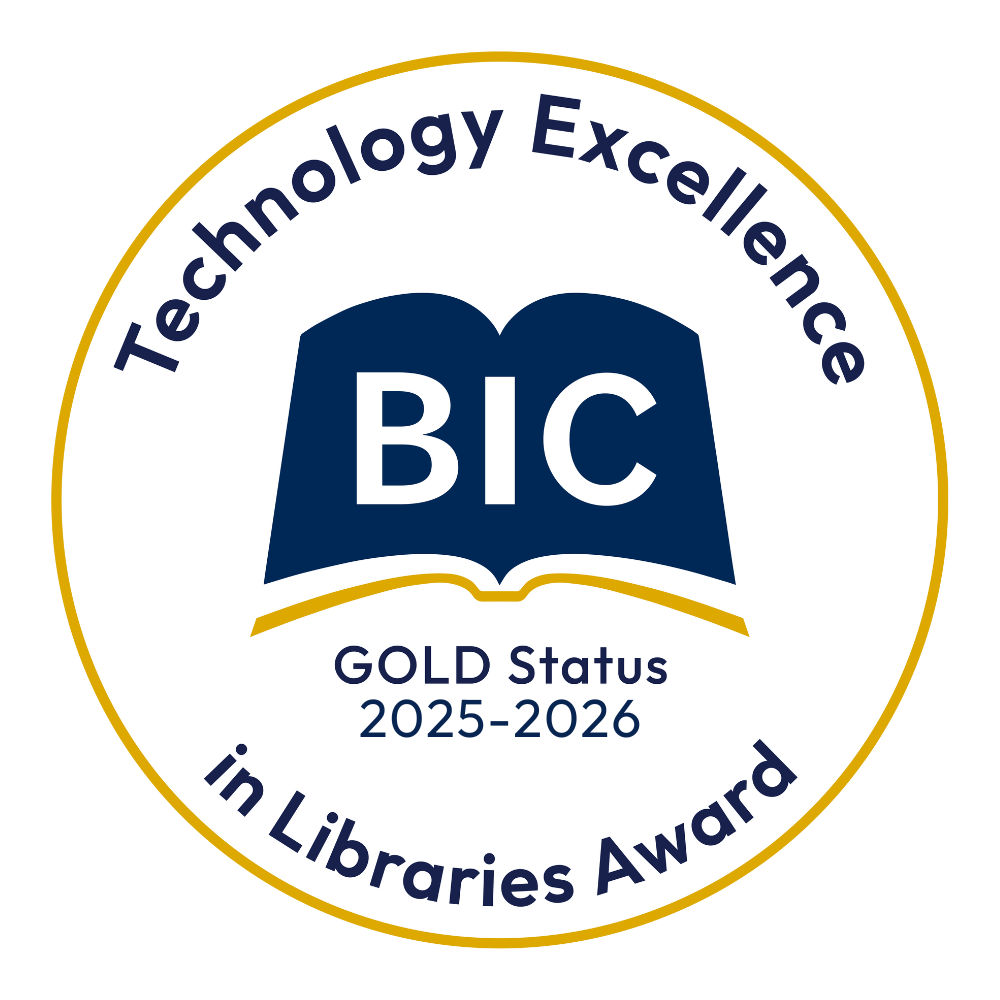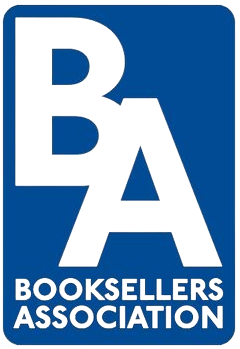Please note: We will continue to deliver your books and furniture until Thursday 18 December for schools, and Tuesday 23 December for public libraries. We will then close for the Christmas break, with deliveries resuming from Monday 5 January 2026. We wish all of our customers a very merry Christmas and a Happy New Year!
For help, advice and telephone ordering call our team on 0121 666 6646
Are you sure you wish to delete this basket?()
This action cannot be undone.
Sorry, something went wrong
Please report the problem here.
Disability, role models and human bionics: Patrick Kane's debut book, Human 2.0
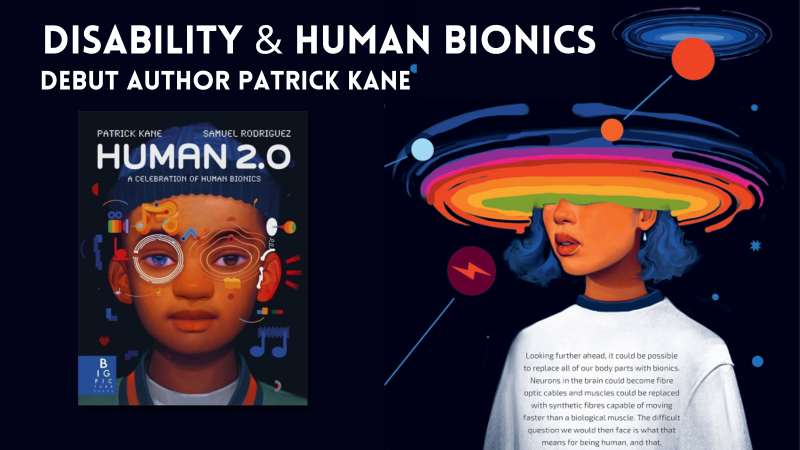
March 30th 2023
After beating the odds, debut author and disability campaigner Patrick Kane has released his startling new book, Human 2.0: A Celebration of Human Bionics. When he was only nine months old, the UK-based writer became a triple amputee after contracting sepsis, a life-threatening infection that kills more people in the UK each year than breast, prostate and bowel cancer combined. Now Patrick, who carried the Olympic torch through Trafalgar Square as part of the 2012 Olympic Games ceremony, raises awareness for disabled people all over the world.
His incredible book, illustrated in full colour by California-based artist Sam Rodriguez, celebrates the remarkable achievements made in medical engineering, and offers a glimpse of what the future might hold for humanity. From cochlear implants and pacemakers to bionic arms and legs, this empowering book also features spotlights on pioneers including Paralympians Richard Whitehead and Blake Leeper, and the world's first 'cyborg' Neil Harbisson. Find out more about Patrick's real-life and literary inspirations below.
People are fascinated by disability but don't always ask questions
When I was growing up, I was always raised with the idea that everybody was different and that my disability was just another way in which I was different from my friends. While I know this was true, it seemed that my differences were much more of a conversation piece that anyone else’s, and that when I met anyone for the first time it was important to address the elephant in the room before normal conversation could continue. On my first 'show and tell' lesson, I brought in a collection of different prosthetic legs to show to my classmates to break the ice. Moments like this have always taught me that people are naturally fascinated by this topic, but they don’t always know if they can ask questions.
As I grew up, I realised that there was so much about disability that I didn’t understand, and I wanted to learn more. There were all these people out there with lived experiences so different to my own who I knew I could relate to if I just understood them better! This led to me having a fascination with science throughout my entire education, and eventually studying biochemistry at university. I knew that science held the answers to all of the questions my classmates would ask me. In many ways, this book is an attempt to explain just how ‘normal’ my own differences are and teach children everywhere that it is okay to be curious about things that are different from themselves.
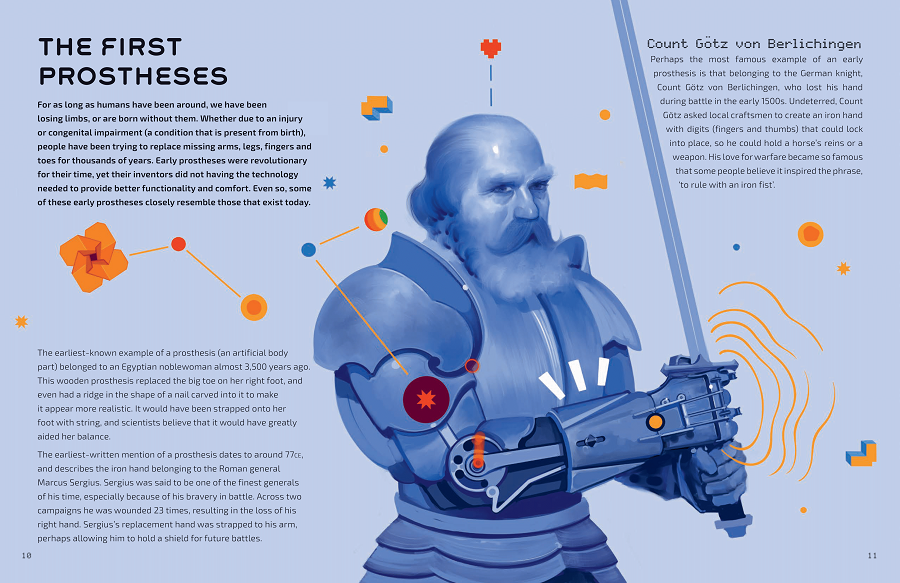
Patrick Kane's debut title explores amazing breakthroughs in science and technology, with full-colour illustrations to bring history to life
There isn't a book like this out there
For both students and teachers alike, I think it can be challenging to discuss topics that are seen to be personal or unfamiliar. The fact that there isn’t a book out there like this is probably a reason why children may struggle with their disabilities, and why they may be distant from peers. It is my hope that this book provides an introduction to these topics that is easily accessible while also celebrating the amazing science behind these devices.
I also believe that the better teachers understand these ideas, the more likely they are to feel comfortable discussing them with their students. I hope that teachers are able to use this book to learn more about these topics, and to help encourage their students to learn with them at this crucial age.
Amazing authors and superheroes have disabilities
Some of the best books from my childhood feature disabilities and highlight them in ways that young people are naturally fascinated by! In terms of fiction, it was always obvious to me how many of the superheroes in X-Men and Marvel had disabilities, and the popularity of the comics were proof of just how exciting disability could be. A personal favourite of mine that shows neurological disabilities was Flowers for Algernon, which talks about a man with a developmental disability who underwent experiments to give him extraordinary intelligence, and the dangers that came with that.
In terms of non-fiction, there are some really amazing disabled authors talking about how their lives. Disability Visibility by Alice Wong was fascinating, and most recently I read Steve Silberman’s Neurotribes, which shone light onto how autism has historically been seen and how it should be embraced in society.
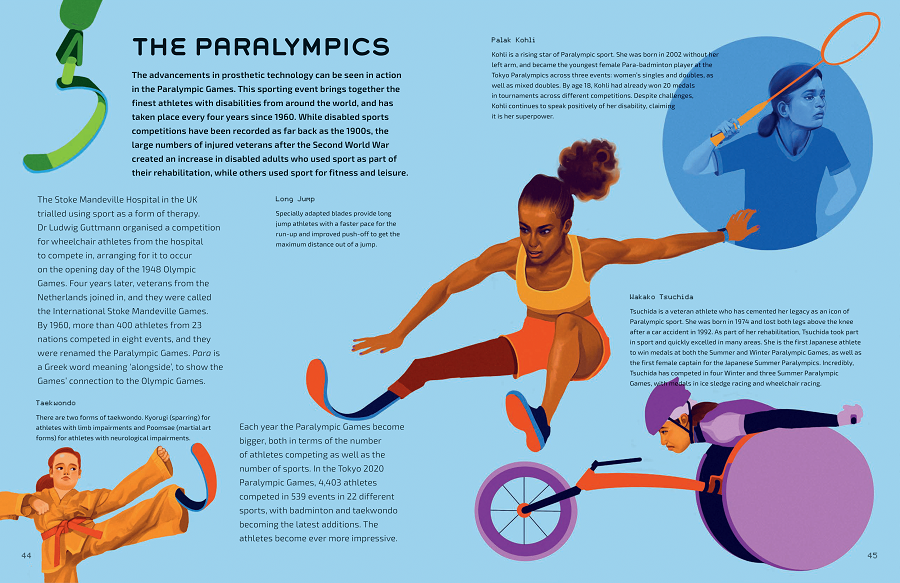
Incredible people with disabilities include Paralympians, along with fictional characters like the X-Men
We need to expose children to disability
I think it is incredibly important that we expose children to disability. Growing up I thought that disability was this incredibly rare thing, but as I have educated myself I know that this is amazingly wrong. It is estimated that 15% of the global population is disabled, and it is almost certain that we will all encounter some form of disability in our lifetimes. Teaching children that this is normal and something that shouldn’t frighten or scare us would make everyone much more understanding and kind.
And while superhero portrayals of disability are amazing and fuel imaginations, it is also important that we educate everyone that being a superhero isn’t the only acceptable form of disability. Disabled people don’t owe anyone to fit in with what others think they should be, and I hope that this book shows that every manifestation of disability is acceptable.
Role models are important for every child, and I think that - whether they are disabled or not - children will find it hard not to be inspired by some of the incredible disabled people we have spotlighted in this book. Growing up I had many role models, both with and without disabilities. I was expected to look up to Paralympians more than my non-disabled friends. While I certainly did idolise them, it is my hope that this book will start to encourage more non-disabled people to see disabled people as role models; not because of their disabilities, but because of the moving human truths at the heart of their stories.
It's great for visual learners
I am truly lucky to partner with an artist as brilliant as Sam Rodriguez for this book. Sam’s work is beautiful and captures the magic of everything, be it a person’s face or a prosthetic limb. If you find yourself more of a visual learner, or just love amazing artwork, I can guarantee this book will draw you into the subject.
For those who are more reluctant to learn about the topic, every innovation in the book is accompanied by a spotlight section on a fascinating individual who has lived and pioneered the technology. I would challenge anyone to not want to learn more about a man with 27 hearts, or the amazing story of a woman who completed a marathon using an exoskeleton. And if those examples aren’t enough, the book explores human evolution and disability in a way that captures not only the ingenuity of the past, but also the excitement of where we are going as a species!
Physical disability book recommendations
📚 READ NEXT: INCLUSIVE EDUCATION FOR REFUGEE AND MIGRANT PUPILS

